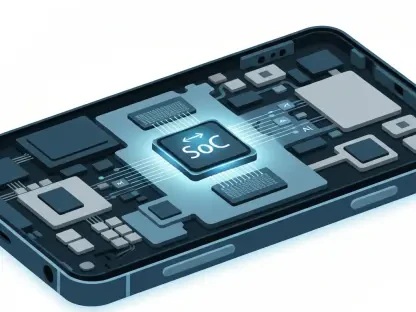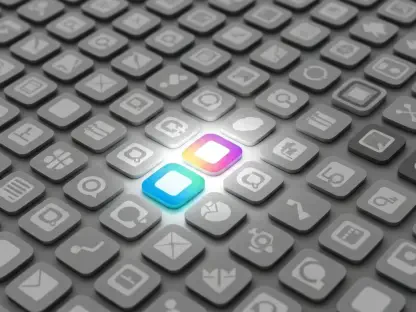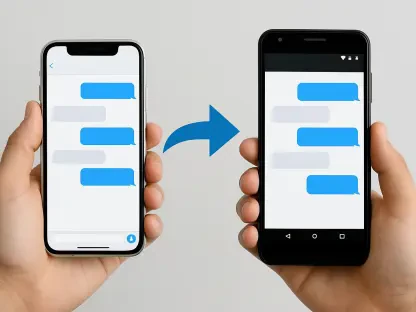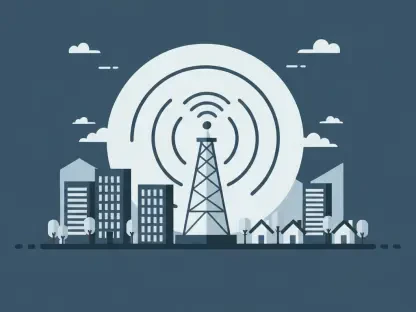Smartphones have become an integral part of modern society, fundamentally altering the way we stay connected with friends, family, and colleagues. With an astounding 5 billion smartphone users currently and projections suggesting this number will rise to 6 billion by 2027, the widespread adoption of these devices is a clear testament to their importance in our daily routines. These devices play a pivotal role in communication, providing access to instant messaging, social media, and video calls, all of which contribute to a highly connected world. As we delve deeper into the transformative impact of smartphones, it becomes evident how pervasive their influence has become on various aspects of our lives.
The Rise of Smartphone Usage
Global Adoption and Growth Trends
Smartphone ownership has seen exponential growth over the past decade. In the U.S., smartphone ownership has surged from 35% in 2011 to an impressive 91% in 2024. This rapid adoption is mirrored globally, with the number of smartphone users escalating from 1 billion in 2014 to an estimated 6 billion by 2027. Continuous advancements in smartphone technology have made these devices more accessible and essential for everyday activities. Innovations such as faster processors, improved cameras, and enhanced connectivity options have contributed to the widespread appeal and utility of smartphones, transforming them into indispensable tools for personal and professional use.
The global increase in smartphone ownership is not just a testament to technological progress but also reflects changing societal norms and behaviors. Smartphones have become essential in various sectors, including healthcare, education, and entertainment, further fueling their adoption. Mobile health apps, online learning platforms, and streaming services exemplify how smartphones have integrated into different facets of daily life. This trend underscores the growing dependency on these devices for accessing information, managing tasks, and staying connected, making them an integral part of modern life across the globe.
Market Share and Competitive Landscape
Apple and Samsung continue to dominate the smartphone market, collectively holding approximately 50% of the global share. Xiaomi, Vivo, and Oppo follow with smaller percentages, indicating a competitive landscape driven by robust consumer demand and ongoing innovation. This competition has spurred technological advancements, resulting in smartphones that are more powerful, feature-rich, and user-friendly. As these industry giants invest heavily in research and development, consumers benefit from a continuous stream of cutting-edge devices that enhance productivity, entertainment, and communication.
The relentless pace of innovation in the smartphone industry ensures that each new generation of devices offers significant improvements over the previous one. Features such as improved battery life, enhanced security measures, and the integration of artificial intelligence are now commonplace, setting new standards for user expectations. Additionally, the competitive landscape has led to more affordable options for consumers, making high-quality smartphones accessible to a broader demographic. This democratization of technology continues to drive global adoption and cements the smartphone’s role as an essential tool for modern living.
Daily Screen Time and Usage Patterns
Increasing Screen Time
One of the common themes in the article is the continuous increase in the average daily screen time spent on smartphones. On average, individuals now spend nearly 3 hours and 50 minutes on their smartphones every day, with users checking their devices about 58 times daily. Of this screen time, approximately 4.37 hours are spent using mobile apps, underscoring the dominance of app usage over other functionalities such as browsing or making calls. The proliferation of mobile apps for various purposes, including social networking, gaming, and streaming, has significantly contributed to this trend, shaping how we interact with our devices and consume content.
The data reveals that the rise in screen time is not just about entertainment; smartphones have also become crucial tools for productivity and communication. Applications for email, project management, and virtual meetings have made it easier than ever to stay connected and efficient. Nevertheless, this increase in screen time also raises questions about the impacts on physical and mental health. Striking a balance between harnessing the benefits of smartphones and mitigating potential negative effects remains a challenge for many individuals in today’s fast-paced digital world.
Impact on Productivity
A striking revelation from the data is the significant time individuals dedicate to their devices, often at the expense of productivity during working hours. The report by Harmony Healthcare IT indicates that people lose around 37.5 minutes of working time daily due to smartphone check-ins. This statistic highlights the need for strategies to manage smartphone usage effectively to maintain productivity. The constant barrage of notifications and the temptation to check social media or news updates can lead to distractions, making it challenging to stay focused on tasks.
Employers and employees alike are increasingly aware of the implications of excessive smartphone use on productivity. Some organizations have implemented policies to limit smartphone usage during work hours, while others encourage digital detoxes or downtime to help employees recharge. Additionally, software solutions that monitor and manage screen time are becoming more popular, offering insights and tools to help individuals develop healthier habits. Balancing smartphone usage with the demands of professional responsibilities is key to maximizing productivity while still benefiting from the connectivity and convenience these devices offer.
Generational Differences in Smartphone Usage
Gen Z and Millennials
Gen Z, identified as those born between 1995 and 2012, exhibit the highest screen time, averaging 6 hours and 5 minutes per day. Millennials follow with 4 hours and 36 minutes of daily smartphone use. These statistics reflect a trend wherein younger generations are more entrenched in digital environments compared to older cohorts. Gen Z and Millennials have grown up with the internet and mobile technology, making smartphones an integral part of their lives for communication, entertainment, and education. Their familiarity with digital platforms and social media has also influenced their consumption patterns, driving app and content development tailored to their preferences.
The digital-native nature of Gen Z and Millennials has significant implications for marketers, educators, and policymakers. Understanding the unique behaviors and preferences of these generations can help in designing targeted strategies for engagement and communication. For instance, social media platforms and content creators often focus on creating short, engaging videos to capture the attention of these younger users. Furthermore, educational institutions are increasingly incorporating mobile-friendly learning resources to cater to the tech-savvy habits of their students, ensuring that learning materials are accessible and engaging.
Gen X and Baby Boomers
In contrast, Baby Boomers, born between 1946 and 1964, spend around 3 hours and 31 minutes on their devices daily. Gen Xers fall in between, with 4 hours and 9 minutes of daily smartphone use. These generational disparities highlight the varying degrees of digital engagement across different age groups. While Gen X and Baby Boomers may not spend as much time on their smartphones as younger generations, they still rely on these devices for essential functions such as communication, information access, and managing daily tasks. Their adoption of smartphone technology has been gradual but steady, driven by the need to stay connected and informed in an increasingly digital world.
The differences in smartphone usage patterns among generations are influenced by various factors, including technological familiarity, lifestyle, and communication preferences. Gen X and Baby Boomers may prioritize functionalities such as email, news apps, and video calls, while Gen Z and Millennials engage more with social media, streaming services, and gaming apps. Recognizing these distinctions is crucial for businesses and service providers aiming to cater to the diverse needs of their customers. Tailoring products and services to meet the specific requirements of each generation can enhance user experience and drive customer satisfaction.
Geographical Differences in Smartphone Usage
High-Usage Countries
Countries like Indonesia and Thailand lead in daily smartphone usage, with individuals spending over 5 hours per day on their devices. Other countries, including the U.S., Brazil, and Argentina, also show high usage rates. These geographical differences suggest a global trend of increasing smartphone engagement, influenced by cultural and socioeconomic factors. In regions with high smartphone penetration and robust technological infrastructure, individuals tend to integrate smartphones more deeply into their daily routines, using them for communication, entertainment, and productivity. The availability of affordable mobile data plans and widespread internet access further supports this high level of engagement.
The specific ways in which people use smartphones can vary significantly across different regions. For example, in some countries, mobile payment apps and digital wallets are extremely popular, while in others, social media platforms or ride-sharing apps dominate usage patterns. Understanding these regional preferences can provide valuable insights for companies looking to expand their presence in global markets. Tailoring marketing strategies and product offerings to align with local customs and behaviors can enhance user engagement and drive adoption in diverse regions.
Cultural and Socioeconomic Influences
The data indicates that cultural and socioeconomic factors play a significant role in smartphone usage patterns. In regions with higher smartphone penetration and technological infrastructure, individuals tend to spend more time on their devices, reflecting the integration of smartphones into daily life. For instance, in countries where mobile commerce is prevalent, smartphones are essential for shopping and conducting financial transactions. Similarly, in regions with a strong emphasis on social connections, social media usage may be higher, contributing to increased screen time. These cultural nuances shape how individuals interact with technology and leverage it to meet their unique needs.
Socioeconomic status also influences smartphone usage, with wealthier regions often having higher smartphone adoption rates due to better access to technology and internet services. Conversely, in less affluent areas, limited resources and infrastructural challenges may impact the extent to which smartphones are used. Addressing these disparities requires a multifaceted approach, including expanding internet access, providing affordable devices, and offering digital literacy programs. By fostering an inclusive digital ecosystem, governments and organizations can ensure that more people benefit from the advantages of smartphone technology, regardless of their socioeconomic background.
Psychological and Societal Implications
Screen Time Addiction
The article notes that 3 in 4 Gen Zers acknowledge spending too much time on their devices, and 36% of Americans believe they have a screen time addiction. This raises concerns about the potential negative impacts on mental health and productivity, emphasizing the need for balance and moderation in smartphone use. Excessive screen time has been linked to various mental health issues, including anxiety, depression, and sleep disturbances. The constant exposure to social media and digital content can lead to feelings of inadequacy, stress, and a lack of real-world social interactions. Recognizing these risks is crucial for developing strategies to promote healthier smartphone habits.
Various initiatives and tools have emerged to address the issue of screen time addiction. Many smartphones now come with built-in features that allow users to monitor and limit their screen time, helping them manage their device usage more effectively. Additionally, mental health professionals and organizations advocate for regular digital detoxes, encouraging individuals to take breaks from their devices to focus on offline activities. By fostering awareness and providing resources, it is possible to mitigate the negative effects of excessive smartphone use and promote mental well-being.
Mental Health and Well-being
Excessive smartphone usage has been linked to various mental health issues, including anxiety, depression, and sleep disturbances. The article underscores the importance of awareness and strategies to mitigate these potential downsides, advocating for a more balanced approach to digital consumption. The overstimulation from constant notifications and the pressure to stay connected can lead to feelings of burnout and fatigue. Additionally, the blue light emitted by screens can disrupt sleep patterns, further impacting overall health and well-being. Addressing these challenges requires a concerted effort from individuals, healthcare providers, and technology companies.
Creating a healthier relationship with smartphones involves setting boundaries and prioritizing offline activities. Simple practices such as turning off non-essential notifications, setting specific times for checking messages, and establishing device-free zones can significantly reduce screen time and its associated stress. Educational campaigns and resources that highlight the benefits of mindful smartphone use can also support individuals in making informed choices about their digital habits. By promoting a balanced approach to smartphone usage, it is possible to enjoy the benefits of connectivity without compromising mental health and well-being.
The Future of Smartphone Usage
Projections and Trends
With projections suggesting that the number of smartphone users will rise to 6 billion by 2027, the future of smartphone usage appears to be on an upward trajectory. The ongoing innovation in smartphone technology will likely continue to drive this growth, making these devices even more integral to our daily lives. Advancements in areas such as 5G connectivity, artificial intelligence, and augmented reality are expected to enhance the capabilities of smartphones, offering new and exciting ways to interact with the digital world. These technological developments will undoubtedly shape the future landscape of communication, entertainment, and productivity.
As smartphones become more advanced, their role in various sectors is likely to expand. In healthcare, for instance, mobile health applications and telemedicine could become even more prevalent, improving access to medical services and patient outcomes. Similarly, in education, smartphones could facilitate personalized learning experiences and bridge gaps in access to quality education. The integration of smart technologies into everyday objects and environments, known as the Internet of Things (IoT), will further enhance the functionality and relevance of smartphones in our connected world.
Balancing Digital Consumption
Smartphones have become an inseparable aspect of modern life, significantly transforming how we connect with friends, family, and colleagues. At present, there are around 5 billion smartphone users globally, with forecasts predicting this number will escalate to 6 billion by 2027. This dramatic growth highlights how essential smartphones have become to our daily routines. They fundamentally change communication practices by providing instant access to messaging platforms, social media, and video calls, creating a hyper-connected world.
The influence of smartphones extends beyond just communication. They have revolutionized how we access information, perform work tasks, shop, and entertain ourselves. From checking emails and attending virtual meetings to online shopping and streaming movies, smartphones have embedded themselves deeply into many facets of daily life. Moreover, they have become indispensable tools for navigation, health monitoring, and even financial transactions through mobile banking apps.
As we delve deeper into the impact of smartphones, it becomes evident how these devices permeate various aspects of our lives. They are not just tools for keeping in touch; they are multifunctional gadgets that support and enhance productivity, leisure, and personal well-being. In essence, the widespread adoption of smartphones marks a significant technological and cultural shift, one that continues to shape the way we live, work, and interact with the world around us.









